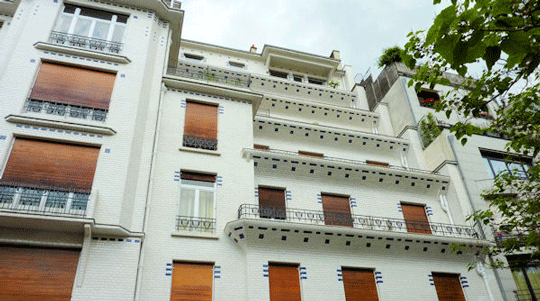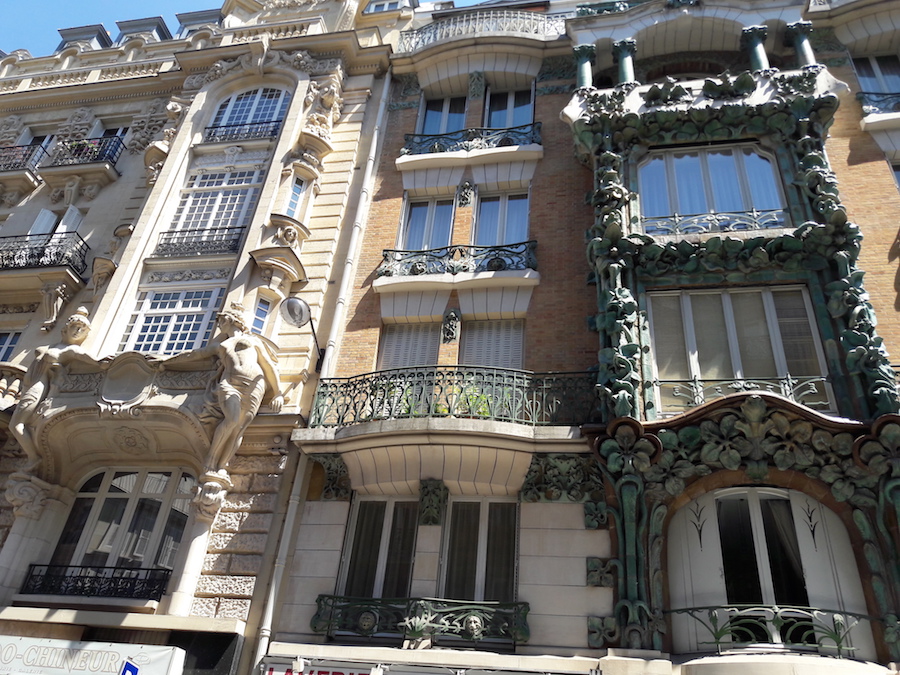By virtue of its exuberance and fancy, Art Nouveau is an artistic movement as surprising as ephemeral (1890 – 1910). Twenty years during which genius architects burst with creativity to make all kinds of buildings and mansions. In Paris, advent of Art Nouveau appeared after 30 years of strict laws regulating the construction of parisians private buildings ( called “Haussmannian” style).
An uniformity that stifled artists imagination, thrilled again from 1882 specifications relaxing. Art Nouveau is extremely present in Paris, mainly in the 16th arrondissement where are no less than 400 buildings from this movement.
You will also find some spread out the city, to discover during your walks in Paris . Below some of the most emblematic buildings in Paris .
Castel Beranger – 14 rue la Fontaine, 16th arrondissement

26, rue Vavin, 6th arrondissement

The facade is covered with sandstone tiles of the same type as those of the Paris metro .
124 Rue Reaumur, 2d arrondissement
The most original elements are a the steel sructure, the bay windows on the 4th floor and the use of brick on the 5th floor
14 rue d’ Abbeville, 10th arrondissement
Made by the architects Albert and Edouart Autant (father and son ) in 1901, the ceramic is from Alexandre Bigot, ceramist and decorator of many art nouveau buildings in Paris.
29 avenue Rapp – Lavirotte building, 7th arrondissement
29 Avenue Rapp, also known as Lavirotte building, is probably the most eccentric and whimsical art nouveau building in Paris. Irregular and asymmetrical architecture, fancy decoration (flowers, animals, patterns), it is a real catalog of forms and shapes it was possible to imagine at that time.
Do not miss the front door, suggestive representation of male genitals… Winner of the prize of the facades of the city of Paris in 1901.
185 Rue belliard, 18th arrondissement
The architecture uses bricks as the church of Saint-Jean-de-Montmartre, and the facade is covered with squares of colored sandstone over the concrete structure. Only its straight lines break with the Art Nouveau aesthetics usually made of curves.

